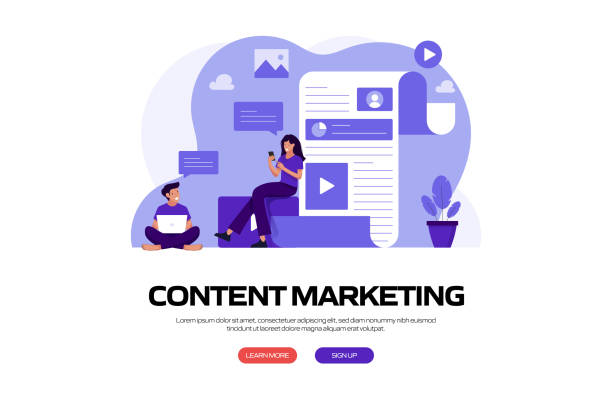Introduction to Inbound Marketing
Inbound marketing is a technique used by marketers to attract potential customers to their website. It’s about creating valuable content that can be found by potential customers through search engines, social media, and other channels. Inbound marketing is a customer-centric approach that aims to build long-term relationships with customers, rather than just selling products or services.
What is Inbound Marketing?
Inbound marketing is a marketing strategy that aims to attract, engage, and delight customers by providing them with valuable content that answers their questions and solves their problems. This approach differs from traditional marketing, which is often interruptive and focused on selling products or services. Inbound marketing is about creating relevant content that people want to engage with, rather than imposing messages on them.
The benefits of inbound marketing
Using inbound marketing as a marketing strategy has many benefits. The first advantage is that it attracts potential customers to your website, rather than forcing you to go and find them. This means your marketing efforts are more effective because you’re reaching people who are already interested in what you have to offer.
Another benefit of inbound marketing is that it builds trust with potential customers. By providing them with valuable content that answers their questions, you show them that you are an expert in your field and that you care about their needs. This builds trust and makes them more likely to do business with you in the future.
The Inbound Marketing Methodology
The inbound marketing methodology is based on four steps: attract, convert, close and delight. Each of these steps is important for building long-term relationships with customers.
The first step is attraction, which involves attracting potential customers to your website. To do this, you need to create valuable content that can be found through search engines, social media, and other channels.
The second stage is that of conversion, which consists of transforming these potential customers into potential customers. You do this by offering them something of value, such as an e-book or white paper, in exchange for their contact information.
The third step is the closing step, which consists of turning these potential customers into customers. This requires nurturing the relationship and providing customers with the information they need to make a purchase.
The fourth and final stage is Enchantment, which is providing exceptional customer service and support to keep customers coming back.
Effective Inbound Marketing Tactics
There are many effective inbound marketing tactics that marketers can use to attract, engage, and delight customers. These tactics are:
Create an inbound marketing strategy
The first step in creating an effective inbound marketing strategy is to define your goals and objectives. This will help you determine the types of relevant content you need to create and how you will promote it. You also need to identify your target audience and develop buyer personas to help you create strategic content that meets their needs and interests.
The role of content in inbound marketing
Content is at the heart of inbound marketing. This is what draws potential customers to your website and keeps them coming back. Creating high-value and effective content requires focusing on the needs and interests of your target audience. This means producing content that is informative, engaging and useful.
The importance of SEO in inbound marketing
Search engine optimization (SEO) is an important part of inbound marketing. It allows your digital content to be found by potential customers when they search for keywords related to your business. To optimize your digital content for SEO, you need to use relevant keywords, create high-quality content, and optimize your website for search engines.
The role of social media in inbound marketing
Social media is another important part of inbound marketing. They allow you to connect with potential customers and share your content with a wider audience. To be effective on social media, you need to identify the right platforms for your business, create engaging content, and engage with your followers.
Email marketing in inbound marketing
Email marketing is a powerful tool for nurturing relationships with potential customers. It allows you to keep in touch with them and provide them with quality content on a regular basis. For email marketing to be effective, you need to build a quality email list, produce engaging content, and use automation to send targeted messages.
Measure the success of your inbound marketing efforts
To measure the success of your inbound marketing efforts, you need to track your key performance indicators (KPIs). These can include metrics such as website traffic, lead generation, conversion rates, and customer retention. Tracking these metrics allows you to identify what’s working and what’s not and make any necessary adjustments to your strategy.
Tools and resources for inbound marketing
There are many tools and resources available to help you with your inbound marketing efforts. These can include marketing automation software, social media management tools, and analytics platforms. It’s important to choose the right tools for your business and use them effectively to maximize your results.
Common inbound marketing mistakes to avoid
There are also common mistakes businesses make when implementing inbound marketing. This may include not defining their target audience, not creating valuable content, and not tracking their results. It’s important to avoid these mistakes and stay focused on your goals and objectives.
Conclusion
In conclusion, inbound marketing is an effective marketing strategy that can help businesses attract, engage and delight customers. By creating valuable content that answers their questions and solves their problems, businesses can build long-term relationships with their customers and achieve their marketing goals. To be successful with inbound marketing, it’s important to develop a clear strategy, produce high-quality content, and regularly measure your results. With the right tools and resources, businesses can achieve great results with inbound marketing.
What is inbound marketing?
What are the benefits of inbound marketing?
How to set up an inbound marketing strategy?
What are the stages of the customer journey in inbound marketing?
How to measure the effectiveness of your inbound marketing strategy?
What are inbound marketing best practices?











